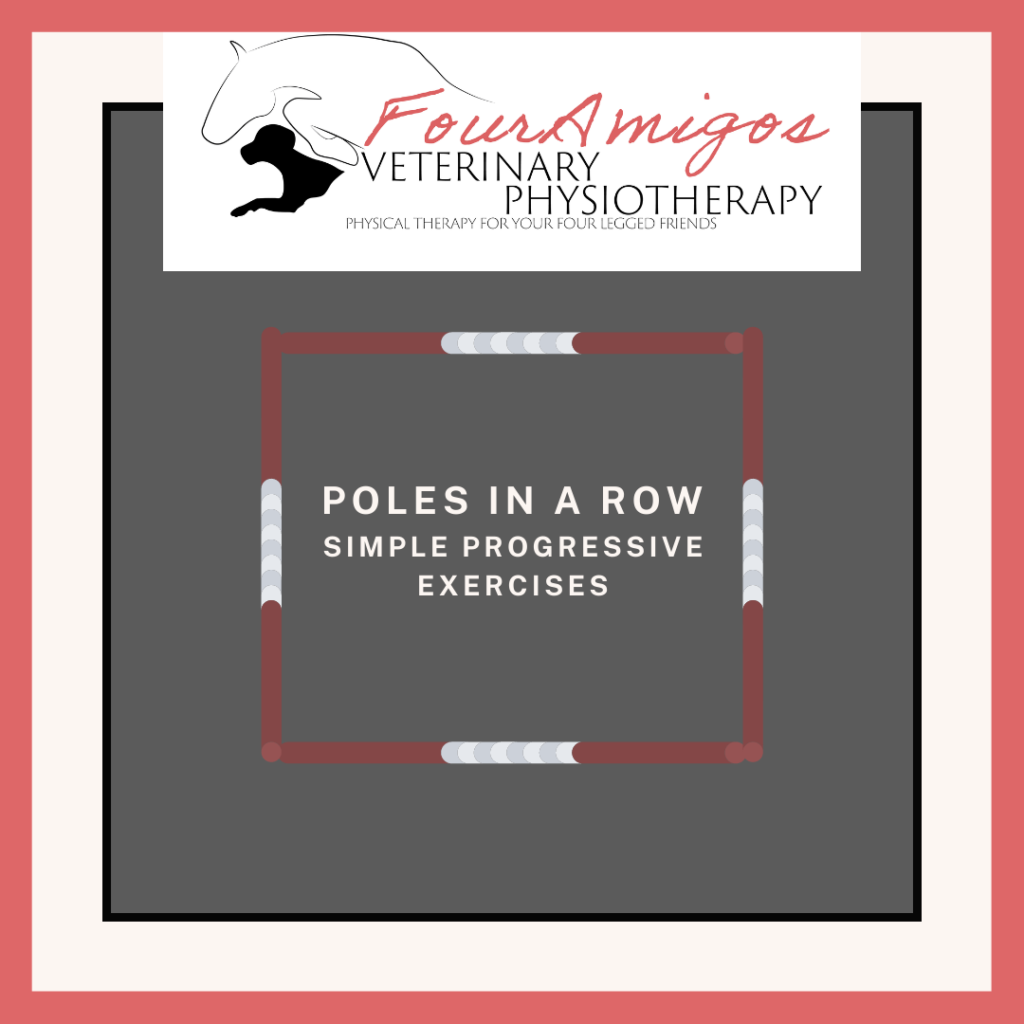As I have mentioned many times before, pole work is great for improving proprioception (neural ability to know where your limbs are in relation to the world) and coordination, muscle strength and cardiovascular fitness, core stability, joint range of motion and health, and dynamic stretching of muscles.
You can increase proprioceptive challenging by arranging sporadic poles with inconsistent distances. You can increase range of motion with raised poles. You can increase core musculature utilisation raising poles and adding turns. And you can increase cardiovascular fitness doing this many times or by progressing to trot and canter poles once mastered at the walk. Long reining is a good way to add variety and control their whole body, lunging adds constant turn which isn’t suitable for every horse, and riding adds difficulty with the weight of the rider.
Research has proven this time and time again…however WHAT exercises help what specifically?!
The Science:
Poles/cavalletti can be utilised with varying difficulty in every gait; they improve inter-limb coordination and promote symmetry, as-well-as encouraging relaxation of epaxial musculature and improvements in kinematic variables (de Oliveira et al. 2015). Walking over poles increases tracking-distance(TD), which transposes to changes in stride-length(SL) in horses for all gaits (Clayton, 2004; de Oliveira et al. 2015).
Changes are created through increased ROM (range of motion) of the proximal joints, as-well-as thoracolumbar/lumbosacral flexion and extension (Waldern et al. 2009); with Murray et al. (2020) finding walking over-ground and raised poles significantly increased wither/sacrum/tuber coxae mediolateral swing, thus suggesting an increase in paraspinal musculature activation and spinal mobilisation. Brown et al. (2015) found horses trotting over poles significantly increased ROM of all limb joints progressively from ground to 20cm high; in addition, Oliveira et al. (2015) found walking over 40cm high poles increased TD and SL, hypothesised to be due to ROM improvements, thus improving hindlimb protraction as-well-as core engagement through the extrinsic musculature e.g. rectus abdominis (Zsoldos et al. 2010; de Oliveira et al. 2015) .
Pole-work is also hypothesised dynamically stretch due to movement being out of “normal-range” (Newman et al. 2012), which is beneficial to the equine case to stretch the hamstring group. Pole-work is highly recommended for stifle injuries to improve recruitment of surrounding muscles such as the vastus lateralis (Blyth, 2020) and to prevent effusion.
Horses utilise increases in joint flexion to clear poles instead of attempting to raise the body higher (Brown et al. 2015), this not only saves energy, but avoids an increase in GRF preventing an increased load on the musculoskeletal system (Clayton et al. 2015). Extension of the metatarso/metacarpo-phalangeal joints also does not increase over trotting poles (Clayton et al. 2015), and neither does flexion of the distal-interphalangeal joints, which is an important consideration for tendon/ligament injuries of the distal-limb and distal-limb osteoarthritis; however, the proximal-interphalangeal joint was not measured. In order to increase joint flexion of proximal joints, flexor muscles of the elbow, hip and tarsus must be activated due to their roles in energy creation of movement (Brown et al. 2015). Additionally, it should be noted there is an increase in forelimb laterally directed braking forces when trotting over poles, suggesting an increase in extensor and adductor muscle recruitment and thoracic-sling musculature, thus benefitting core musculature (Clayton, 2016).
Protocols are minimally researched, however Newman et al. (2012) noted kinematic improvements were not sustained once pole work is discontinued, therefore regular integration into exercise programmes is required.
What to do:
I have added here 2 simple progressive options based on your aims.
So level 1 is a simple row of poles, and your horse needs to be able to do this comfortably before you progress. They should not hit them or alter their striding excessively to make it through.

Level 2 can be either raising alternate ends, which increases their range of motion further and core stability to keep their balance, or change to a fan, which increases dynamic stretching.


Level 3 is progressing is further, making the exercise more complex to challenge coordination, proprioception, and muscle strength further along your chosen route.
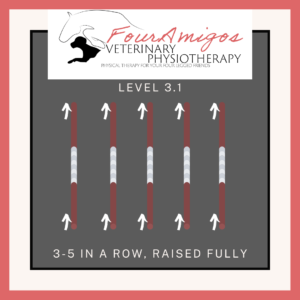
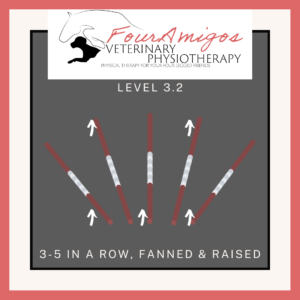
Additionally, this set of square poles is great as you can do it in walk, trot and canter! (But only do this once your horse is ready).
Your horse should be able to walk over a single pole comfortably without hitting it and able to adjust their stride before you progress to anything harder.
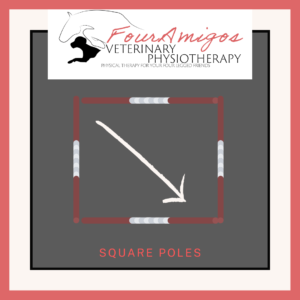
You can do this ridden or in hand, starting off in walk with big circles, and progressing to trot and gradually doing tighter circles. You can use them to change the rein, to work on lateral bending and proprioception with smaller circles, to build fitness, you can even work on control by stopping between the poles! The list is endless, but here is a few combos to get started….
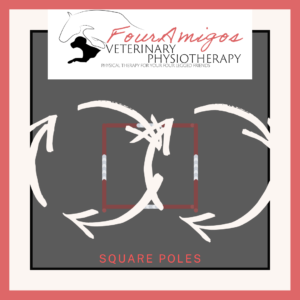

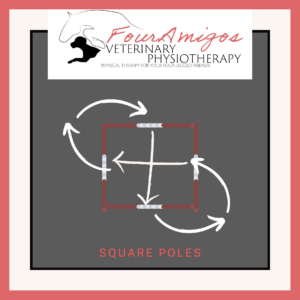
Key tips:
👍Always start with 1 pole to check your horse is capable of a single pole without hitting them or spooking, and progress to 3 before progressing to 5!
👍Work with an instructor to get the right striding for your horse
👍Start in walk before progressing to trot or canter also. Walk is actually the hardest gait to perform poles in as they cannot utilise momentum or tendon spring to get them out of trouble! Many people use trot poles, however, horses utilise tendon spring to get over a trot pole, and therefore once they’ve completed the initial walk to trot transition, they can recycle energy and “spring” up, making going over a pole in trot easier than walk in that respect. Whereas walking they need to generate the energy every stride utilising the proximal limb musculature with the hip completing most of the motion.
👍These can be altered to suit your horse, aka if they use their left hind more than their right, just raise the right side to encourage greater use
Final thought
So challenge for the week…pick a simple walk pole work exercise to add in to your exercise sessions! Such as the exercises above, or something different like sporadic scatter poles, a single line of poles down the centre line and serpenting over them, or make a plus➕ sign and making a four leaf clover by walking over a pole and doing a circle, then over the next pole and circling…and so on!
Any questions get in touch! I can assess your horses capability to know where to start, and as a qualified instructor can work with your and your horse on a pole work programme! Pole work clinics are great, but if you do something out of your horses capabilities it could cause injury or make them even more asymmetric!

